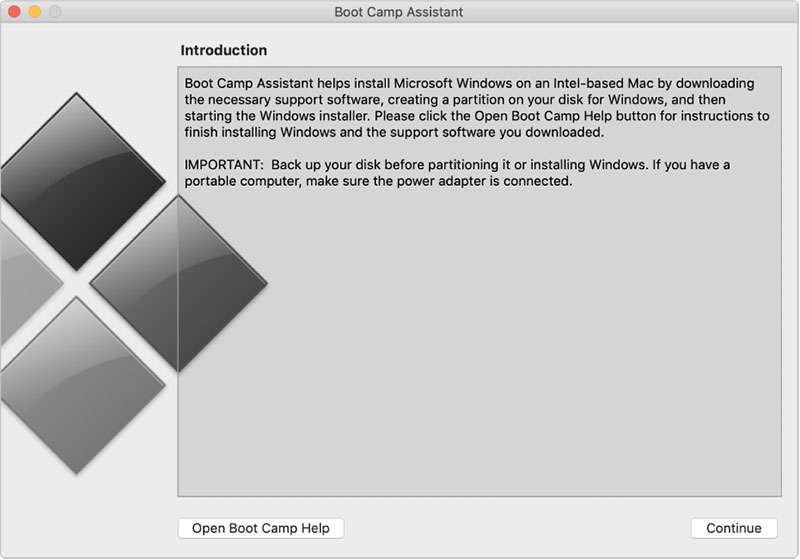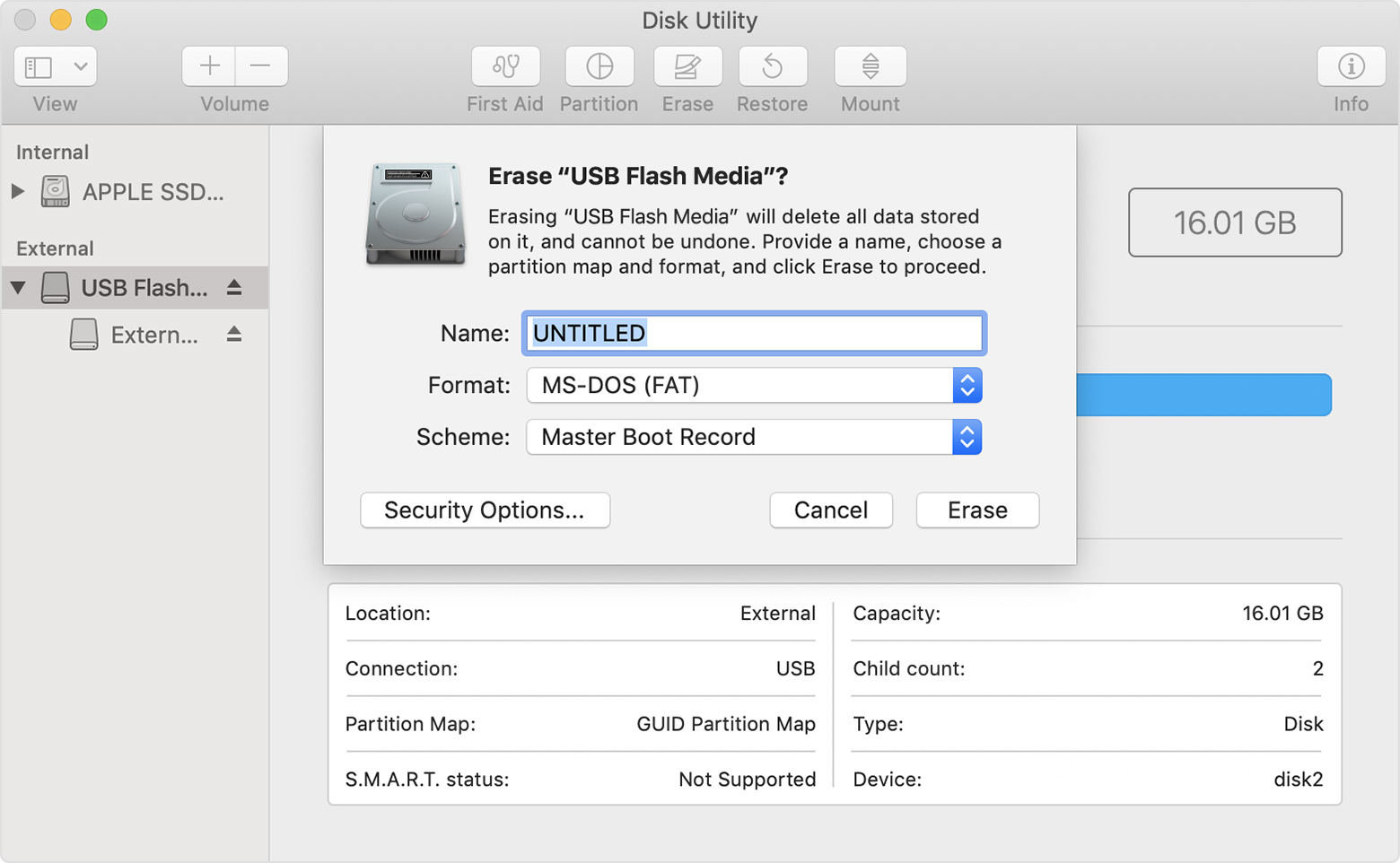Not only macOS High Sierra but you’ll also need a bootable USB drive to install new versions of macOS Mojave, macOS Catalina, and updated versions. A bootable flash drive is an external hard drive or optical disk that is created with a computer operating system and can be used to boot a desktop computer or laptop instead of the Windows. Clone current Windows installation to USB and make the USB bootable. Complete the given below instructions to clone your existing Windows 10 (any other version of Windows) installation to a USB drive and then make the drive bootable. Step 1: Connect your USB drive and backup all data to a safe location.
- Set-up the Bootable USB Drive. On the off chance, the user needs to create a Windows 7 bootable USB drive with a 4GB drive. Be that as it may, on the off chance that you need to make a bootable drive of Windows 8, Windows 8.1 or Windows 10, then it’s imperative for you to get an 8GB USB drive.
- Preparing a bootable USB of Windows 10 is as simple as making a bootable USB of Windows 8 or Windows 7. In fact, all the methods and tools out there to create Windows 7 bootable USB work great with Windows 10 as well.
If your Mac suddenly refuses to boot up properly, you might need a bootable macOS USB installer to make repairs. But how do you create such a disk if all you're left with is a Windows 10 computer? Fortunately, there's a great tool that you can use for free to create bootable macOS media on a USB drive in a Windows 10 environment. This article shows you how to download a macOS DMG file, format a USB drive using a GUID Partition Table, burn the DMG to the drive and boot your Mac from the USB. All the steps except the last one are done on a Windows 10 machine.
Part 1: Download macOS or Mac OS X DMG File
The first step is to get the DMG disk image file for the version of macOS that you want. You can get a copy of the latest macOS version from Apple download portal or App Store here. There are also several other direct download sites that offer various versions of Mac OS X in DMG format rather than the standard APP format that runs on Mac. Since you're working in a Windows environment, you need the DMG rather than the APP file.
macOS DMG Download Link:
Part 2: Format USB Drive to GPT (Optional)
Updates (Dec 8, 2020): The latest version of UUByte DMG Editor is able to format the USB automatically, so this part is optional. Follow the steps only when the burning process failed in Part 3.
Mostly, the USB drive was formmated to FAT32 in default when being shipped out from the factory. However, FAT32 can be only used for installing OS with legacy BISO, which doesn't work for macOS. So the next step is to format your USB drive in the GPT partition style in order to burn installation files to the desired USB drive. You can do this in Command Prompt as admin. In elevated Command Prompt (Ctrl+Shift+Enter), input the following series of commands followed by Enter after each line:
Diskpart
List disk
Select Disk X (X stands for the USB drive name that appears after the previous command)
Clean
Convert GPT
Create partition primary
Part 3: Create Bootable macOS USB from Windows 10/8/7 PC
You have now formatted the partition of USB drive. It's time to download UUByte DMG Editor for Windows. Although this is a premium software, you can use the initial free trial period to create a bootable macOS USB on Windows 10. After installing the application, follow the sequence of steps shown below:
Step 1: Right-click the software icon on desktop and select 'Run as Administrator' from the contextual menu. Choose 'Run' when prompted.
Step 2: Insert your formatted USB drive, and click 'Burn' tab on the main screen.
Step 3: Click 'Browse' button to import macOS dmg file into the program. And select the USB drive name from the second row. You can also set a volume labe for that USB drive.
Step 4: Click 'Burn' button at the bottom to start the process. You will see a progress bar and wait around 10 minutes to get it done.
Step 5: Once the progress bar is at 100%, a bootable macOS USB is ready. After that, you can use that USB drive for installing macOS.
This is one of the easiest way to create a bootable macOS USB on a Windows PC. The steps are simple and instructions are pretty clear.
Part 4: Boot Mac from macOS USB Drive for Installation
Now remove the USB drive and insert it into the Mac computer. To boot from the disk, you need to hold down the option key when you hear the boot chime. This will take you to the Startup Disk Manager, where you should be able to see the USB drive. It might have a different name, but as long as it is bootable, you'll be able to see it there. Once you select it, the computer will boot from the disk and the macOS installation will begin.
Conclusion:
The whole process might look a bit complicated if this is your first time, but just follow the instructions in this article and you should be fine. That being said, you need to be careful when downloading the DMG file and formatting your USB drive. If you don't do these two steps correctly, the output drive from the UUByte DMG Editor software won't be bootable, which means you can't install macOS from that USB drive, and you may need to do the whole thing over again.
In case you think of downloading Windows from Microsoft Store, you are surprised with two alternatives: The user has access to download an assortment of compacted documents; the user can download an ISO record.
An ISO record joins all the Windows establishment documents into a solitary uncompressed record. On the off chance, if the user plans to download an ISO record so the user is allowed to create a bootable document from a USB drive, duplicate the Windows ISO document in drive and run the Windows USB Tool. At that point basically, you just need to introduce Windows onto your PC straightforwardly from your USB or DVD drive.

So basically, after you have downloaded the ISO record, you should duplicate it onto a USB. At the point when you’re prepared to introduce Windows, embed the USB drive or DVD with the ISO record on it and afterward run Setup.exe from the root organizer on the drive.
This permits you to introduce Windows onto your machine without having to initially run a current working framework. On the off chance that you don’t erase your duplicate of the ISO document in the wake of introducing the Windows programming, the duplicate of the ISO record considers your one back-up duplicate.
In the event that you have to download the product once more, you can go to your Download Purchase History in your Microsoft Store record and access the download there.
Also Read:-How to Download and Install Windows 8 Step-by-Step Tutorial
The basic computer system necessities
- Windows XP SP2, Windows Vista, or Windows 7 (32-piece or 64-piece)
- Pentium 233-megahertz (MHz) processor or quicker (300MHz is suggested)
- 50MB of free space on your hard drive
- DVD-R drive or 4GB removable USB drive
This instructional exercise will assist you with the establishment of Windows from image (.iso and .img) document utilizing USB Drive.
Set-up the Bootable USB Drive
On the off chance, the user needs to create a Windows 7 bootable USB drive with a 4GB drive. Be that as it may, on the off chance that you need to make a bootable drive of Windows 8, Windows 8.1 or Windows 10, then it’s imperative for you to get an 8GB USB drive.
Then, you are required to format the USB drive utilizing the FAT32 or NTFS document framework. It is recommended designing the USB drive utilizing NTFS record framework for better similarity with more up to date Windows renditions.
Click on the run button to start the PowerISO (v6.5 or more up to date form, download here). Additionally, the USB drive you expect to boot from.
- “Make Bootable USB Drive” > click “…” tab to open the iso record of the Windows working framework.
- Select the right USB drive from the “Goal USB Drive” list if various USB drives are associated with the PC.
- Pick the best possible composing strategy. “USB-HDD” is suggested.
- Snap “Start” catch to begin making bootable USB drive.
- Power ISO prevents the user’s confidential information on the USB drive. Snap “alright” to continue. The program will begin composing USB drive and indicating the advancement data. You ought to get the message “Composing USB drive finished effectively.” after the activity finishes.
Set-up the Configuration for the BIOS
Mojave Bootable Usb Windows 10

Presently you’ll have to extricate all records from Windows arrangement ISO. You can remove the documents utilizing a record chronicle programming, for example, 7-Zip, WinRAR, and so on. You can do this by right-tapping on ISO picture document and afterward choosing the “Mount” choice. Presently you simply need to duplicate all records from removed or mounted Windows ISO to your USB drive. That’s everything. And finally, you have made it to the mark by completing the process of creating bootable Windows 7 from ISO file.
Proceed to Boot and Establishing Windows From USB Drive
- Reboot the framework.
- During the booting process, get into the BIOS setup screen by continuously pressing on keys like F1, F2, Delete or Escape. Hotkey directions are by and large displayed on the screen.
- Visit the segment that holds your boot gadgets.
- With your USB drive connected, the USB drive ought to be recorded. In the event that it isn’t, your framework probably won’t bolster booting from USB. Expecting that it is upheld (just like the case with for all intents and purposes all cutting edge equipment), elevate your USB drive to the essential boot gadget.
- Exit from the BIOS arrangement, sparing all changes.
Macos Mojave Bootable Usb Windows 10
Create Bootable Windows 7 USB from ISO File
Make Mojave Bootable Usb On Windows
You can create bootable Windows 7 USB from ISO file by accessing the link below. Also, make sure that you have enough back up before you proceed with the same. There are a lot of duplicate ISO images on the market and it is best to download the same from a trusted source.
